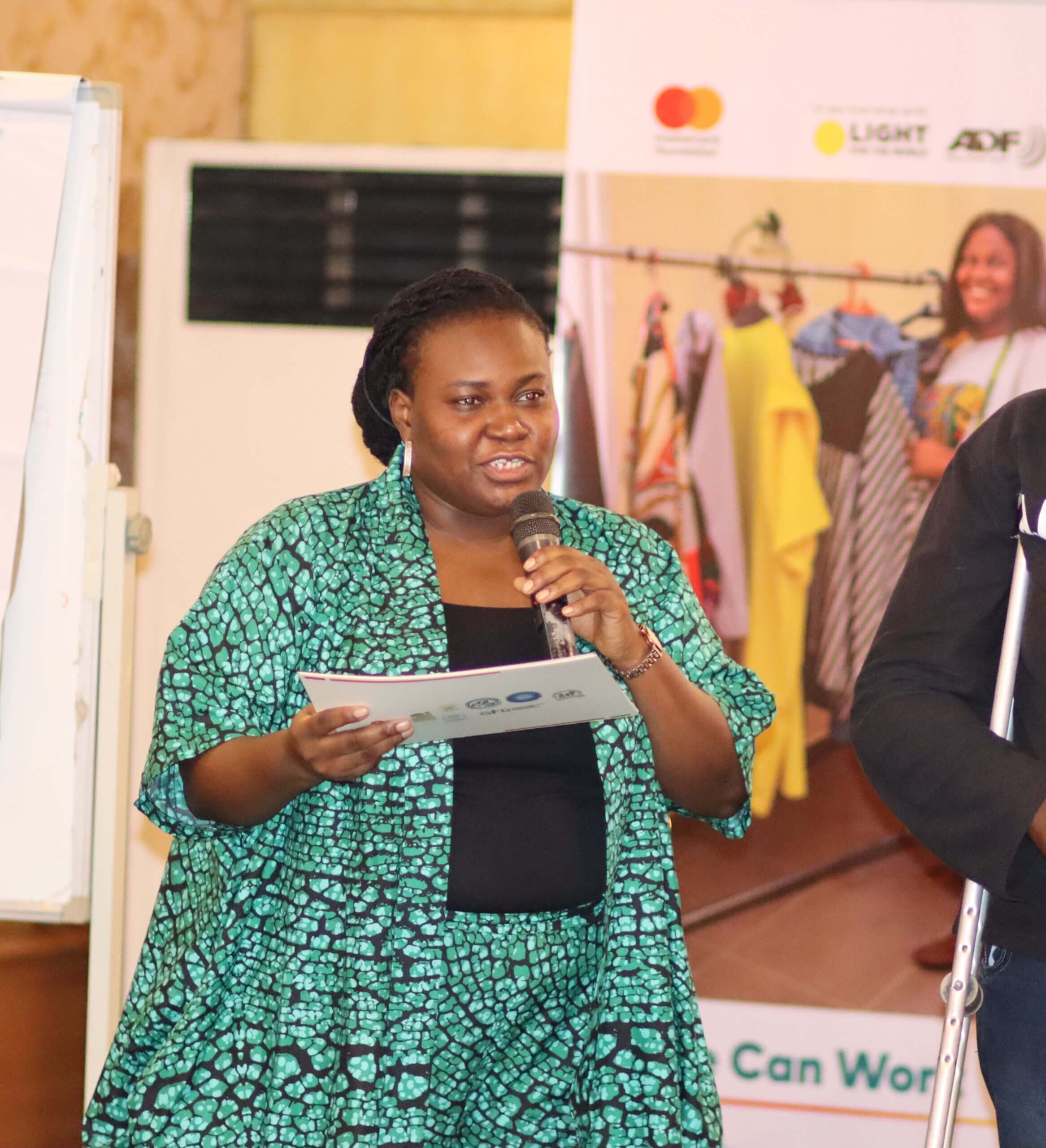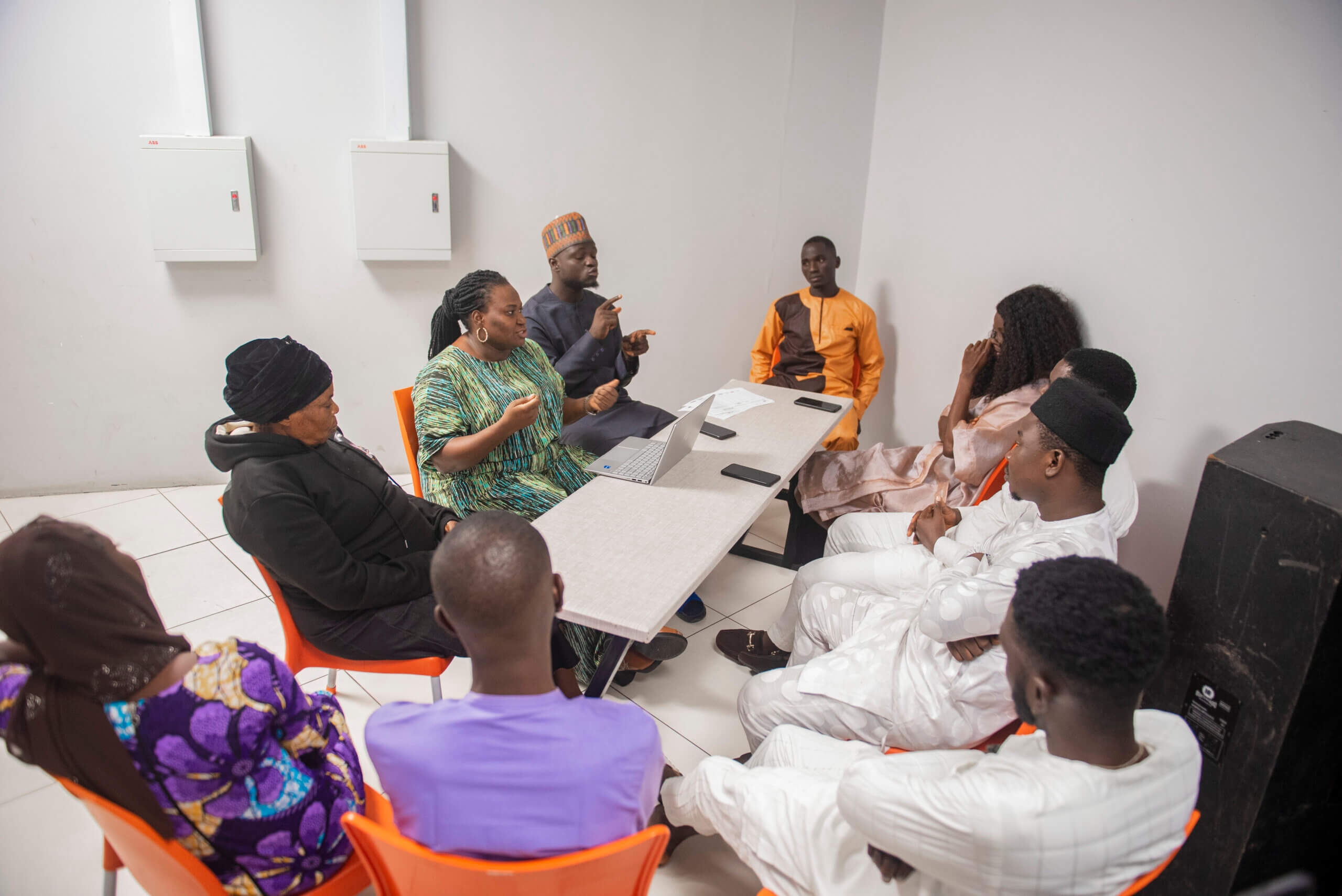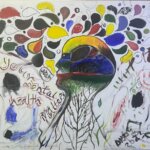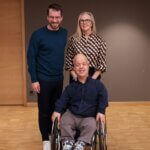- General
- Disability Rights
Today, on World Mental Health Day, Disability Inclusion Expert, Adedotun Esan, shares her lessons and experiences in providing and advocating for disability inclusive mental health services.
People with disabilities are more exposed to mental health issues
World Mental Health Day provides us with an opportunity to use our voices to promote mental health awareness in the workplace and in society, to improve health and wellbeing and to ensure the retention of young persons with disabilities in the workforce.
According to the World Health Organization, people with disabilities experience more mental health issues, as well as increased diagnosis of mental health conditions compared to people without disabilities.
Adedotun Esan, We Can Work Nigeria Office Inclusion Advisor, is a celebrated disability inclusion voice, who works to foster inclusion and advocates for inclusive mental health services.
The We Can Work programme is led by Light for the World in partnership with Mastercard Foundation, African Disability Forum, Crosswise Works, Joint National Association of Persons with Disabilities in Nigeria and six other Organisations of People with Disabilities across the seven focus countries.
Strategies for disability inclusive mental health at the workplace
Adedotun shares ten lessons about inclusion, mental health and the workplace:
What sparked your interest in advocating for disability inclusion and mental health in the workplace?
“When I came back to Nigeria, after the COVID-19 pandemic, I discovered it was difficult to get proper psychotherapy support.”
“I did eventually, and it helped me and that made me feel like “okay, if these things are happening and people are not getting help, people don’t even know that they exist”.”
“I started my journey of mental health awareness.”
“I got to engage with people with disabilities. And I was able to understand that they are further disenfranchised from mental health services. That’s when I started speaking about how it is important to be very inclusive across all care for everyone, especially people with disabilities.”

Promoting change and mental well-being
Do you have a favourite mantra that inspires your work in promoting mental well-being for employees with disabilities?
“When your desire to change becomes heavier than your desire to remain the same, then you start to move, and you start to pick yourself up.”
“I came across this quote when I was taking my cognitive behavioral therapy course.”
“I think these words are encouraging for anyone, whether you’re an employee with a disability or not.”
Disability inclusive mental health requires empathy
Describe a rewarding moment when you witnessed a shift in attitudes toward mental health inclusion among coworkers.
“Recently, I supported a “mental health in the workplace” workshop. At the beginning of the workshop, there were attitudes of “what is mental health all about” and people did not understand why they were taking this workshop.”
“By day five you could see shifts happening in people’s attitudes.”
“Once people start shifting their mind, you start seeing that they become more inclusive because they’re more empathetic. Because inclusion is not just for disability, but also about including people from diverse backgrounds – their religion, their culture and their gender.”
“People are more empathetic if they are very aware of the fact that people come from different spaces, and they are at different places in their mental health.”
Audio transcript
What’s the most creative approach you’ve seen an organization take to prioritize mental health for youth with disabilities in the workplace?
Okay, so like I said, if you know in this part of the world, even inclusive employment for persons with disabilities is still very, you know, it’s not so….. But one thing that I have seen at least in this, my experience of working with mental health in the workplace is that some organizations are very intentional about their staff’s well-being. So they have this wellness time and it’s always very inclusive.
So there’s an organization that I had facilitated a retreat for. So they do this thing, like an annual thing, where they bring their staff three, four days and they go and chill somewhere in a resort. And they had a wheelchair user as a team member.
So what I saw that happened was that they were very intentional that he was able to participate fully. The hall they used was very accessible for him. And any activity that we do, they try to encourage him, support him.
So that wellness thing, a lot of organizations are really doing it now to take care of the mental health of their staff and inclusive of persons with disability if they are in that organization. So that’s one thing that I think is very creative. That wellness programs that they do for their employees, yeah.
Describe a particularly rewarding moment when you witnessed a shift in attitudes toward mental health inclusion among coworkers and management?
Hmmmm, okay, I think I have a very recent one. Recently, I had supported to do a mental health in the workplace workshop. At the beginning of the workshop, so there was this, what’s my business with mental health?
What’s my own? I don’t even understand why I’m in this class and all of that. But at the end of day one, there was already that, oh my God, is this what mental health is about?
Is this what it means? It means that, oh, I have to be very empathetic, I have to be very accommodating to my colleagues, irrespective of their abilities or disability and then by day five, you could already start hearing people say, oh, do you know, somebody did this to me. Normally, even before this class, I would have flared up or I would have just responded in a very erratic way. But because of this course, I was a bit calm and I tried to understand where the person is coming from.
Those kind of shifts happen when awareness is continuous. Once people start shifting their mind, you start seeing that they become more inclusive because they’re more empathetic. Because inclusion is not just for you to say a person with disability, but even including people from diverse backgrounds, their religion, their culture and all of that, their gender. People are more empathetic if they are very aware of the fact that people are coming from different spaces and they are at different statuses in their mental health. So yes, that’s one very rewarding moment that I would highlight right now.
If you were to create a lighthearted and fun totem to symbolize mental health support in the workplace for youth with disabilities, what animal or character would it be and why?
The first thing that comes to mind is chameleon, it is very adaptive. So if you go to different settings, different things are applicable. For example,
You’re coming from an organization where their culture is different and you move to another organization where their culture is different, it helps you adapt to the environment. The workplace is not static, there are different times. So for chameleons to be able to adapt for different times.
So you talk to different people in different ways because of their different personality. It helps you understand. So that way, people don’t feel like, oh, this person likes one person or this person doesn’t like the other person.
But you’re able to come to everybody’s level and deal with them where they are and who they are. So that’s the first thing that came to mind, chameleon.
And if everybody can adopt that in the workplace, I think there’ll be a peaceful workplace.
Adapt to the needs of people with disabilities
What animal or character would you choose to symbolise mental health support in the workplace for youth with disabilities?
“The first thing that comes to mind is chameleon. It is very adaptive.”
“The workplace is not static; things are constantly changing. And chameleons can adapt to different times.”
“If everybody can adapt in the workplace, I think there would be a peaceful workplace. That way, you’re not trying to treat people based on a preconception about them, but you are dealing with them as they are.”
Take time and listen
What’s the most heartwarming gesture you’ve seen from a coworker toward a young colleague with a disability who was struggling with mental health challenges?
“The first amazing gesture is to listen. I try to listen.”
“Another thing I have seen work is the buddy system – having an office buddy that you can trust, take a walk with, or talk to, given that the workplace is somewhere we spend a lot of our time.”
Mental health matters, and it is everybody’s business”
The positive impact of feedback
What’s the most impactful feedback you’ve received from a young employee with a disability about the support for their mental health in the workplace?
“Recently, a Disability Inclusion Facilitator (DIF) I had called sent me a message saying, “Thank you very much, Ditty (my nickname), for listening and giving me feedback””.
“It was receptive feedback, and the person expressed gratitude, saying the feedback has really shaped their thought process and built their capacity to deal with people better.”
Raise awareness about disability inclusive mental health
Can you share a suggestion from a young person with a disability to improve mental health support in the workplace?
“I have heard a lot of people saying, “Do not talk about it to anyone in the workplace, they will never understand you, and they will judge you”, and I think it is not a good thing.”
“When you tell people not to talk about it, you are further pushing them to a place where they feel they are different, they do not feel safe.”
“Everyone needs an outlet for whatever they are going through.”

Mental health matters!
If you were to paint a mural representing mental health inclusivity for youth with disabilities in the workplace, what would the mural depict and why?
“I have one painting right now that I am looking at.”
“It is a big head that says mental health matters, with speech bubbles all around the head. Every person that came to an event I held last year did a painting of those bubbles. We had different colours, which depicts our differences, we all have different things that resonate with.”
“It also symbolizes that we are all at different stages, we are all willing to grow and our collective belief gave us that full picture.”
“We all used different colors, but that is what made it beautiful.”
The power of kindness
What’s the most touching response you’ve witnessed from a manager supporting the mental health needs of a young employee with a disability?
“I am a certified mental health first aider, which means I train mental health first aid.”
“I facilitated a training, and we asked questions like “why are you in this place?”. One of participants said, “I am taking this course because I feel I would learn to be a kind and empathetic leader to my team, and I want them to be able to rely on me.””
“That was the most touching thing I have heard from someone. I felt he already understood what mental health is, but he wanted to do better.”
Create safe spaces to talk about mental health and disability inclusion
Lastly, if you were to sum up the journey toward mental health inclusion for youth with disabilities in the workplace using a movie title, which movie would it be, and why?
“I love movies.”
“I would even do a series, linked to something I started three years ago, called “The Vent Lounge with Ditty”.”
“It is a safe space where people can express whatever they are going through and get insights from others.”
“People can share their struggles and how they overcame them. This will make others that are struggling realise that they are not alone.”
“I just want people to be fine, take a hold of their mind, know that they are not alone and whatever they are going through right now is just a phase, that will pass.”




